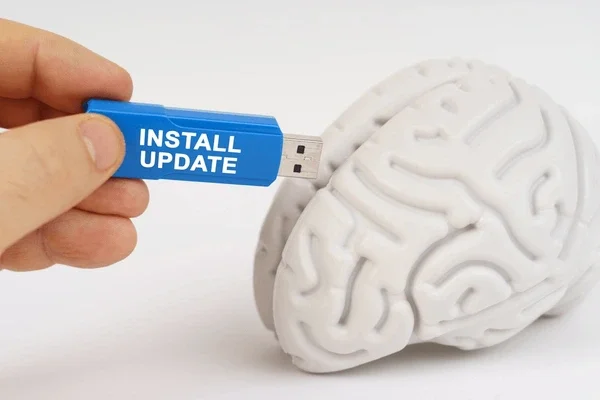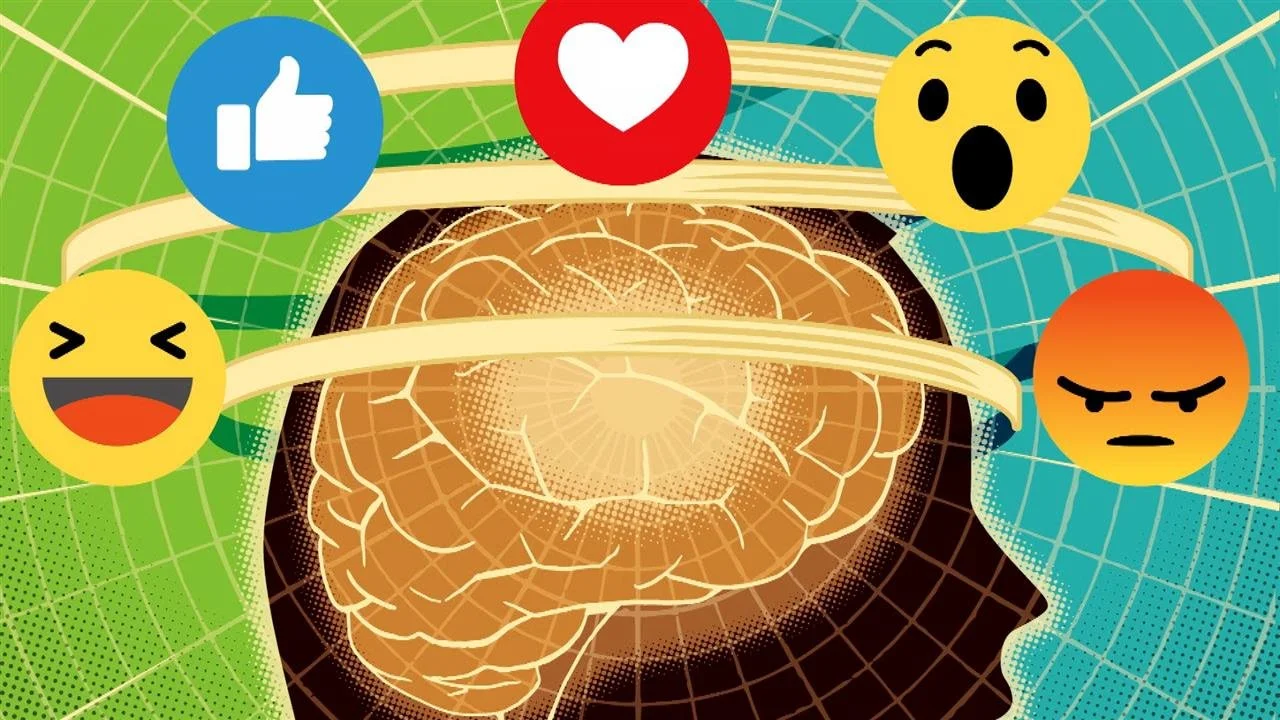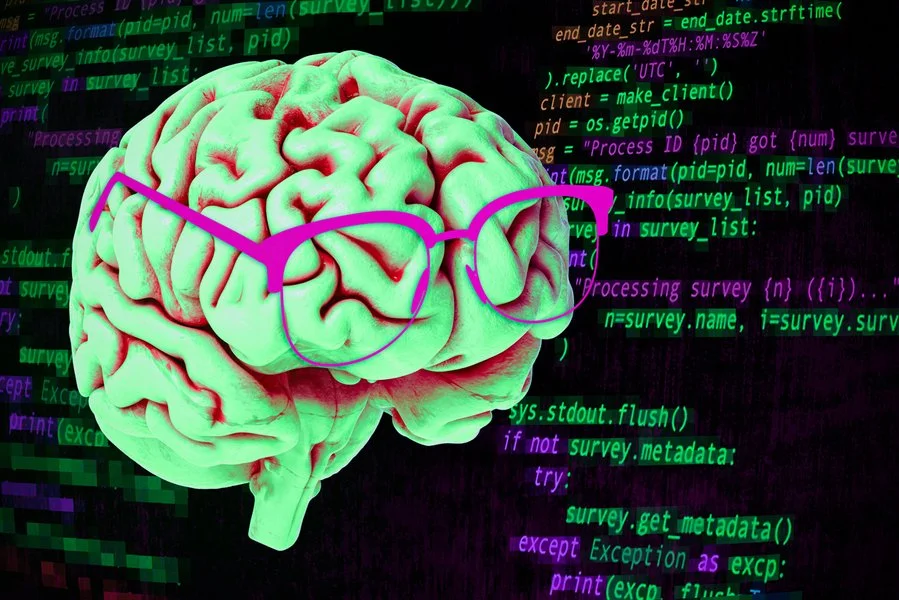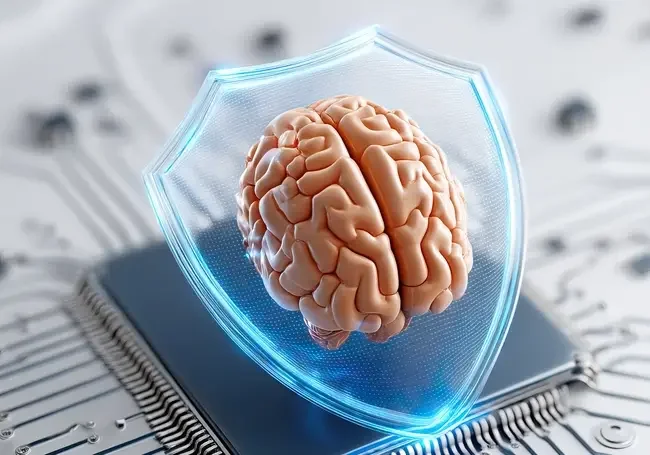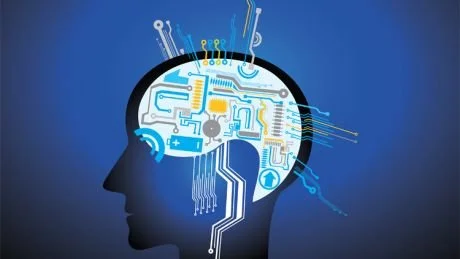
Celibate in the City
Your Brain is Running on Outdated Software — Here’s How to Upgrade
If your life were a computer, how many times would it have frozen this year?
How many tabs are still open from three years ago? How many pop-ups from the past keep interrupting your present? You don’t need more hustle—you need a software update.
What are you talking about, Maria? Dear reader, I’m talking about leveling up.
Getting to the 20.26 version of yourself. I’m using that number because this is the version of you that’s going to ring in the new year. We have 135 days to create the brand-new algorithm that your future self will operate on.
Are you with me? Do you want to build the future you—bit by bit—into a version of yourself that your current self would be absolutely wowed by? Then you’ve come to the right blog.
For the sake of my current obsession—a new life-improvement app—we’re going to envision our action steps for leveling up as a software update.
Your Mental Software Architecture
Daily habits are your programs. They run on autopilot, quietly executing in the background, forming the backbone of your mental operating system. Thoughts are your algorithms. TikTok and Instagram may predict your next scroll, but your brain is doing the same thing—it forecasts, suggests, and filters based on your past thought patterns. These algorithms don’t just decide what you think; they dictate how you think, ultimately shaping your entire perception of reality.
Here’s where it gets interesting: your belief system and your environment are constantly writing new code. Cue the trumpets. That realization makes me want to dance in the rain—because it means the foundation of my mental software is not fixed. It’s flexible, editable, it’s alive. Writing new code is always within reach. So when was the last time you actually audited your time or cataloged your recurring thoughts? High time to start, if you ask me. I’m right there with you, debugging my system and pushing updates—not just to serve the “me” of today, but the version of me who’s already living the life I’ll have five years from now.
The Core of Your Outdated Software: Your OS
Your Operating System (OS)—your core identity and values—is the foundation everything else runs on. If the OS is outdated or corrupted, it doesn’t matter how amazing your apps (habits) are—they will eventually crash. So here’s the doozy: Who are you—not who you aspire to be, but who you are based on your outputs? Your actions define your identity. The most prominent processes in your life—the things you do consistently—become the essence of your personal “life application.”
It can feel existentially jarring to face that. What if I falter? What if I switch it up? But remember: life is a river, always moving. You’re evolving in real time, moment by moment, flowing toward the version of yourself you choose to cultivate. And here’s the liberating truth: your OS is not hardwired. It can be updated anytime. No matter how many times you’ve “crashed,” you can reboot. Every day is a new chance to upload stronger, cleaner code.
Niels Bohr, one of the fathers of quantum theory, famously said, “Prediction is very difficult, especially if it’s about the future.” That’s because the future isn’t set—it’s constantly shaped by what we choose right now. For example, think about someone who’s always labeled themselves as “bad with money.” That belief is part of their OS. But the moment they start tracking expenses, setting up auto-savings, and learning about investing, they’re not just changing habits—they’re literally installing a new identity: someone who is financially capable. That’s the power of an OS update.
The Five Pillars of Mental Software Health
Family life, fitness, thought life, spiritual life, creative pursuits—assign one word to describe each. Why? Because language creates awareness. If you cannot name the current state of a system, you cannot measure it, and what you cannot measure you cannot intentionally improve. By distilling each area of your life into a single word, you’re not just summarizing—you’re diagnosing. You’re running a system scan.
Think of it this way: when developers evaluate an app, they don’t look at the entire codebase all at once. They isolate the modules, identify which parts are stable, which are lagging, and which need immediate patches. By naming where you are in these five areas, you begin to see which modules of your life are optimized, and which are holding back the entire operating system.
Some apps are running smoothly; others are crashing intermittently. Maybe your family life is stable, but your fitness program hasn’t been updated in months. Maybe your creativity is flourishing, but your spiritual life is still running on outdated code you inherited years ago. Without taking the time to describe and assess, you risk putting all your energy into the wrong fixes—updating what’s already working while leaving the weak spots vulnerable.
This is why description is powerful: it forces clarity. It forces you to confront where your system is truly aligned and where it is quietly malfunctioning. The act of naming shines a light on hidden errors you might otherwise ignore. And just as importantly, it prevents overcorrection. You don’t need to wipe the whole system clean—you need targeted updates.
Because here’s the larger point: life is not about having five separate, competing apps. It’s about integration. Your relationships affect your thought life. Your thought life affects your fitness. Your spiritual health influences your creativity. Each pillar is a process, but together they form one seamless unit—your identity. Updating only one without the others leads to imbalance; the system may run, but it won’t run efficiently. True upgrading happens when you recognize the interconnectedness of these areas and commit to aligning them toward the future version of yourself.
Input Sources: Data Streams
Your brain is constantly consuming input: conversations, media, books, podcasts, people. Every interaction, every headline, every scroll becomes part of your neural ecosystem. Much like a database that updates itself with each new entry, your mind is quietly logging, indexing, and weighting all of this information. Over time, these inputs determine the “default settings” of your thinking.
Change just one aspect of what you feed it, and the effects can be surprisingly disproportionate. A single adjustment, consistently applied, begins to rewrite your inner recommendation engine—the mental equivalent of what YouTube or TikTok does with its algorithms. Just as liking one video reshapes your entire feed, one repeated choice in your intellectual diet subtly redirects your thought streams, ideas, and habits.
The neuroscience is clear: the brain is not a passive receiver of data, but an adaptive organ constantly rewiring itself in response to the quality and frequency of incoming information. Neuroplasticity ensures that what you repeatedly expose yourself to literally reshapes your synaptic architecture. In other words, your inputs don’t just inform you; they transform you.
Here’s where it gets practical. People often overestimate the value of radical overhauls—cutting out all media, reinventing their routines overnight—yet research shows that such drastic changes often destabilize the system and lead to relapse. Incremental adjustments, however, are sustainable. Swap one evening of doomscrolling for a meaningful podcast. Replace one negative conversation with five minutes of intentional solitude. It seems trivial in the moment, but five-second micro-choices accumulate. Over weeks and months, they compound into a redesigned mental environment.
The key is recognizing that you are both the programmer and the user of your own operating system. Every choice about what enters your mind is a line of code. Drastic change may crash the program; steady, intentional inputs build resilience. The feed will shift—but this time, you’re the one training the algorithm.
Debugging Your Mental Software
All programs have bugs. In code, a bug is a flaw or unintended behavior that causes dysfunction; in life, these are the bad habits, maladaptive thought loops, or recurring behavioral patterns that sabotage long-term growth. Just as no programmer ever writes a flawless codebase, no human runs a flawless life script. But that truth isn’t discouraging—it’s liberating. Because if bugs are inevitable, then the goal is not perfection, but maintenance. The challenge is not to eradicate all errors, but to cultivate a practice of systematic debugging.
Self-reflection is your debug mode. Yet, here’s the nuance: frequency matters. A daily audit often creates hyper-vigilance—an obsessive over-monitoring of progress that paradoxically generates more stress than clarity. A weekly audit, however, offers enough perspective to identify recurring “exceptions” in your behavioral code while still being immediate enough to implement quick fixes. The process is less about catching every slip, and more about recognizing enduring patterns.
For example, your personal “release notes” might read:
Version 20.26.1: Stopped scrolling before bed → woke up with clarity.
Version 20.26.2: Replaced evening glass of wine with journaling → experienced deeper sleep.
This incremental tracking is not trivial. In cognitive psychology, researchers have long observed the self-monitoring effect: the simple act of recording a behavior increases the likelihood of positive change, even without external intervention. In other words, logging your updates isn’t just documentation—it is transformation.
Over time, your mental “changelog” tells the story of resilience, growth, and evolution. The accumulation of small, consistent bug fixes rewires your operating system to run smoother and stronger. And perhaps most importantly, this process reinforces a deeper identity shift: you begin to see yourself not as someone plagued by errors, but as someone capable of systematically upgrading.
We’ve been operating at 10,000 feet deep in this metaphor, but now it’s time to ascend to 20,000 and talk about a more insidious threat—software viruses.
Viruses in the System
I remember a time when I had to update my software—not on my phone, but in my mind. At that point, I was trapped in a toxic relationship. My mental operating system was running on a vicious loop: verbal abuse, cheating, love-bombing, extreme affirmation, followed by stretches of support and constant time together. That cycle reinforced the illusion that my life had to revolve around someone who no longer aligned with my purpose and no longer allowed me to live with real quality. I was living in a program that I hadn’t consciously chosen, one that was full of bugs and viruses that kept crashing my sense of self.
I share this because it’s crucial to recognize when you’ve already updated your inner software—even in small ways. That awareness gives you a roadmap toward the next version of yourself. As long as you are alive, there exists a future version of you who would look back at your current self and say: We can do better. That future self has already conquered your current goals, already transcended the problems you’re wrestling with. That update is available—you just need to install it.
Okay, back to my story. What became clear was that my own behaviors were keeping me stuck. I was giving too much time and energy to someone who created mental clutter in my life. And here’s the thing: when you update your phone’s iOS, it forces a restart. Why? To create distance between the old system and the new. The same is true for us. The first step in updating your mental software is creating distance—from habits, conversations, and people who no longer serve you. Without that distance, everything feels foggy, and you can’t see the freedom waiting on the other side.
So I created distance. At first it was small: I became less available, I shifted the conversations I allowed myself to have, and I began noticing how much lighter I felt when I wasn’t constantly plugged into someone else’s drama. Because the truth is, there was a lower-frequency version of me that I kept feeding by staying engaged. People who don’t have your best interest at heart reveal themselves in the way they speak. To the untrained ear, it can sound convincing. It sounds like: “Nobody’s ever going to love you like I do.” Completely false. There is endless love in the world, from your family, from your creator, from future relationships. To claim otherwise is pure ego.
Another line sounds like: “You’re all I have.” Again, false. There are eight billion people on this planet. If someone makes you their entire world, it’s not romance—it’s restriction. It’s a trap disguised as devotion. And until you can recognize that distortion for what it is, you’ll keep downloading viruses into your system.
Updating your software requires courage—the courage to cut off those viruses before they corrupt the rest of your code. It requires creating distance and then protecting that distance like your peace depends on it. Because it does. On the other side of that distance is clarity. On the other side is freedom. And on the other side is the newest version of you—the one who refuses to run on outdated systems ever again.
Firewall & Antivirus: Protecting Your System
Every strong system needs protection. No matter how brilliant your upgrades are, if your mental software is constantly exposed to viruses, it will eventually crash. For the brain, those “viruses” are toxic relationships, negative self-talk, and environments that pull you backward instead of pushing you forward.
Your firewall is built from discipline and boundaries. It doesn’t appear overnight—it’s established through baby steps. Saying no once when you usually say yes. Taking a five-minute pause before reacting. Redirecting yourself when you slip. These micro-updates reinforce your operating system, making your inner defenses stronger with each repetition. Neuroscience shows this isn’t just feel-good advice: consistent self-restraint strengthens the dorsolateral prefrontal cortex (dlPFC), the part of your brain responsible for executive function and long-term decision-making. In plain English—each small act of discipline is like adding another brick to your firewall.
And then there’s the antivirus: reboot and recovery. This is where most people underestimate the system. Rest isn’t laziness—it’s maintenance. Sleep, meditation, a walk in silence, a real vacation: these are the updates that clear your mental cache and prevent burnout. In neuroscience, deep rest is when the brain consolidates learning, flushes toxins, and literally rewires habits into permanence. Without it, even the most elegant new code collapses.
Think of it this way: your system doesn’t need one massive overnight upgrade—it needs thousands of micro-updates stacked together. One boundary honored, one negative thought redirected, one extra hour of sleep. Each step is small, but the compound effect is monumental. Protect your system today in tiny increments, and tomorrow it will run smoother, faster, and stronger—ready for any new program you decide to install.
The Upgrade Imperative
Your life may feel lagging—not because you’re lazy—but because you’re running 2020 software in a 2025 world. You can’t expect next-level performance from a system coded for survival when what you need now is success. The cost of not updating isn’t inefficiency—it’s irrelevance. In a world that reinvents itself daily, standing still is the fastest way to fall behind.
The most dangerous program isn’t the one that fails—it’s the one that works flawlessly…for a goal you no longer have. That’s the trap: momentum without meaning, efficiency without evolution. And yet, the very fact that you’re aware of this is proof you’re already halfway into the update. Awareness is the notification that your system has a patch available—you just have to click “install.”
So, what’s your first step? Commit to one change this week. Update a habit. Shift an input. Protect your mental bandwidth like your future depends on it—because it does. Think of it as debugging your destiny. Even one keystroke of change today can rewrite entire chapters of your life tomorrow.
Updating your software is challenging—but when you take control, you move from passenger to pilot. You stop outsourcing your path to old code and start flying with intentional design. You become the architect of your operating system, turning obstacles into launchpads, setbacks into fuel, and illusions into limitless opportunity.
The world belongs to those who run on the latest version of themselves—
and the download starts now.
Until next time,
Maria 🌹

